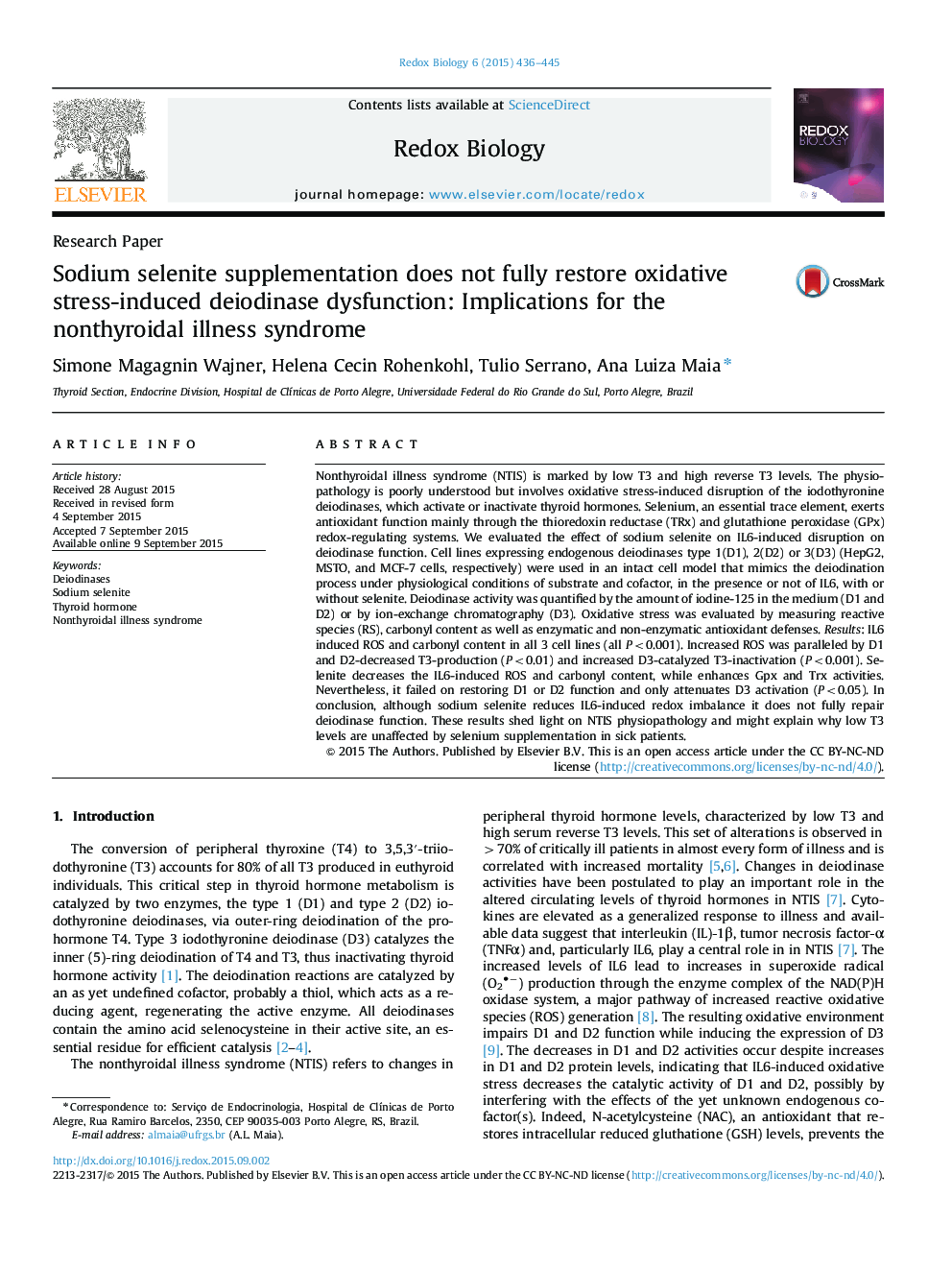| کد مقاله | کد نشریه | سال انتشار | مقاله انگلیسی | نسخه تمام متن |
|---|---|---|---|---|
| 1922941 | 1535844 | 2015 | 10 صفحه PDF | دانلود رایگان |

• IL6 induced oxidative stress impairs deiodinase function in critically ill patients.
• Selenite induces the antioxidant defense through the enzymatic TRx and GPx pathways.
• Selenite attenuates redox imbalance but it does not restore deiodinase activities.
• Intracellular cysteine levels are critical to proper deiodinases function.
Nonthyroidal illness syndrome (NTIS) is marked by low T3 and high reverse T3 levels. The physiopathology is poorly understood but involves oxidative stress-induced disruption of the iodothyronine deiodinases, which activate or inactivate thyroid hormones. Selenium, an essential trace element, exerts antioxidant function mainly through the thioredoxin reductase (TRx) and glutathione peroxidase (GPx) redox-regulating systems. We evaluated the effect of sodium selenite on IL6-induced disruption on deiodinase function. Cell lines expressing endogenous deiodinases type 1(D1), 2(D2) or 3(D3) (HepG2, MSTO, and MCF-7 cells, respectively) were used in an intact cell model that mimics the deiodination process under physiological conditions of substrate and cofactor, in the presence or not of IL6, with or without selenite. Deiodinase activity was quantified by the amount of iodine-125 in the medium (D1 and D2) or by ion-exchange chromatography (D3). Oxidative stress was evaluated by measuring reactive species (RS), carbonyl content as well as enzymatic and non-enzymatic antioxidant defenses. Results: IL6 induced ROS and carbonyl content in all 3 cell lines (all P<0.001). Increased ROS was paralleled by D1 and D2-decreased T3-production (P<0.01) and increased D3-catalyzed T3-inactivation (P<0.001). Selenite decreases the IL6-induced ROS and carbonyl content, while enhances Gpx and Trx activities. Nevertheless, it failed on restoring D1 or D2 function and only attenuates D3 activation (P<0.05). In conclusion, although sodium selenite reduces IL6-induced redox imbalance it does not fully repair deiodinase function. These results shed light on NTIS physiopathology and might explain why low T3 levels are unaffected by selenium supplementation in sick patients.
Figure optionsDownload as PowerPoint slide
Journal: Redox Biology - Volume 6, December 2015, Pages 436–445